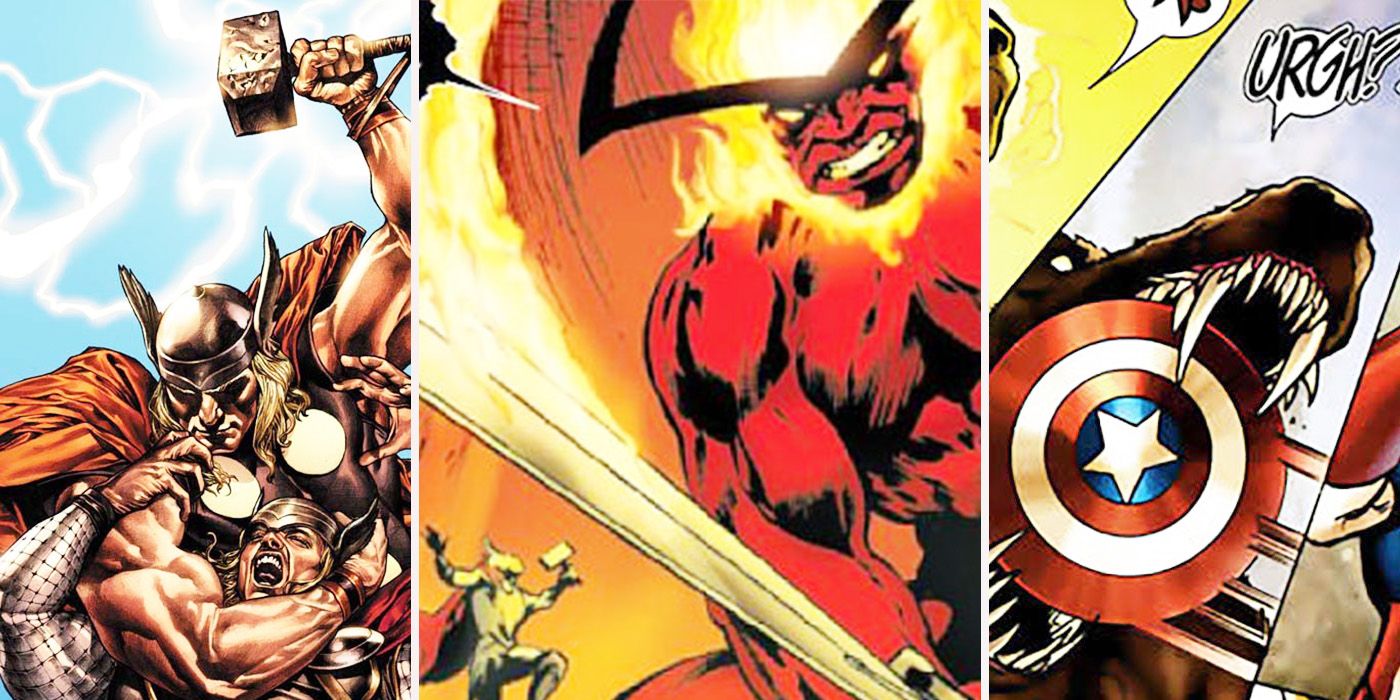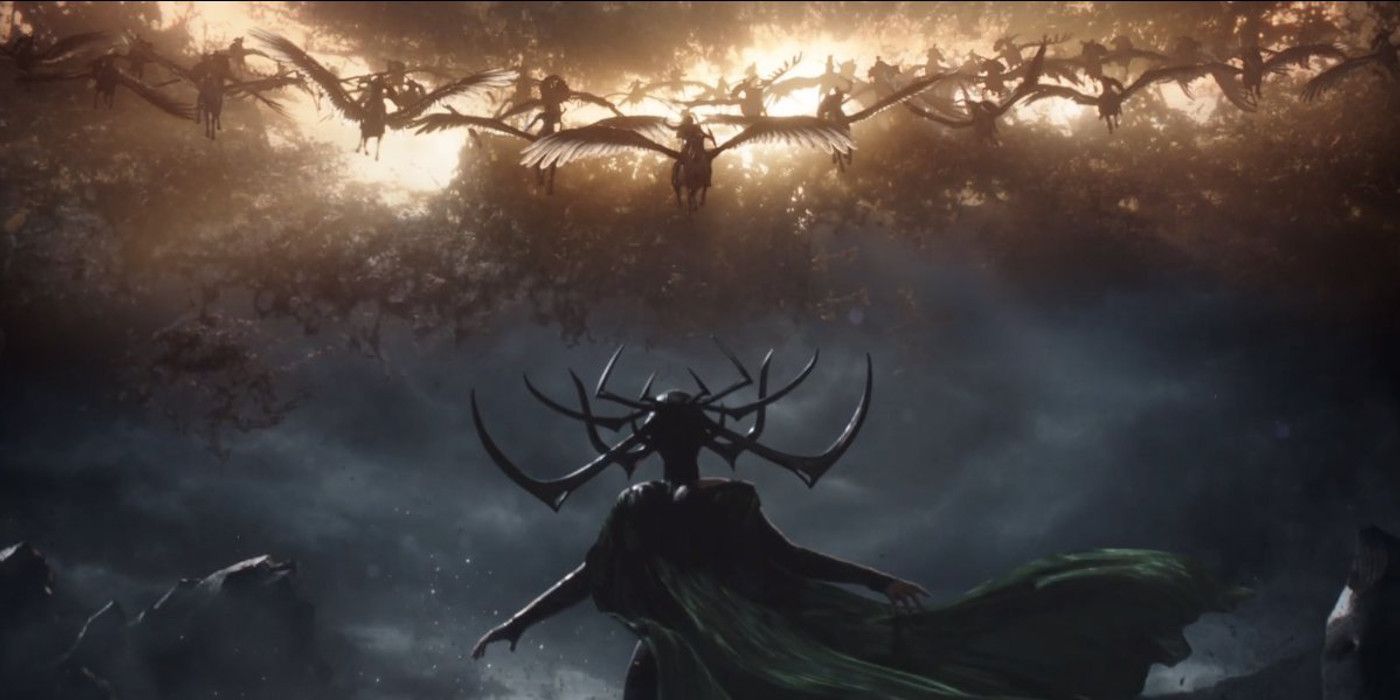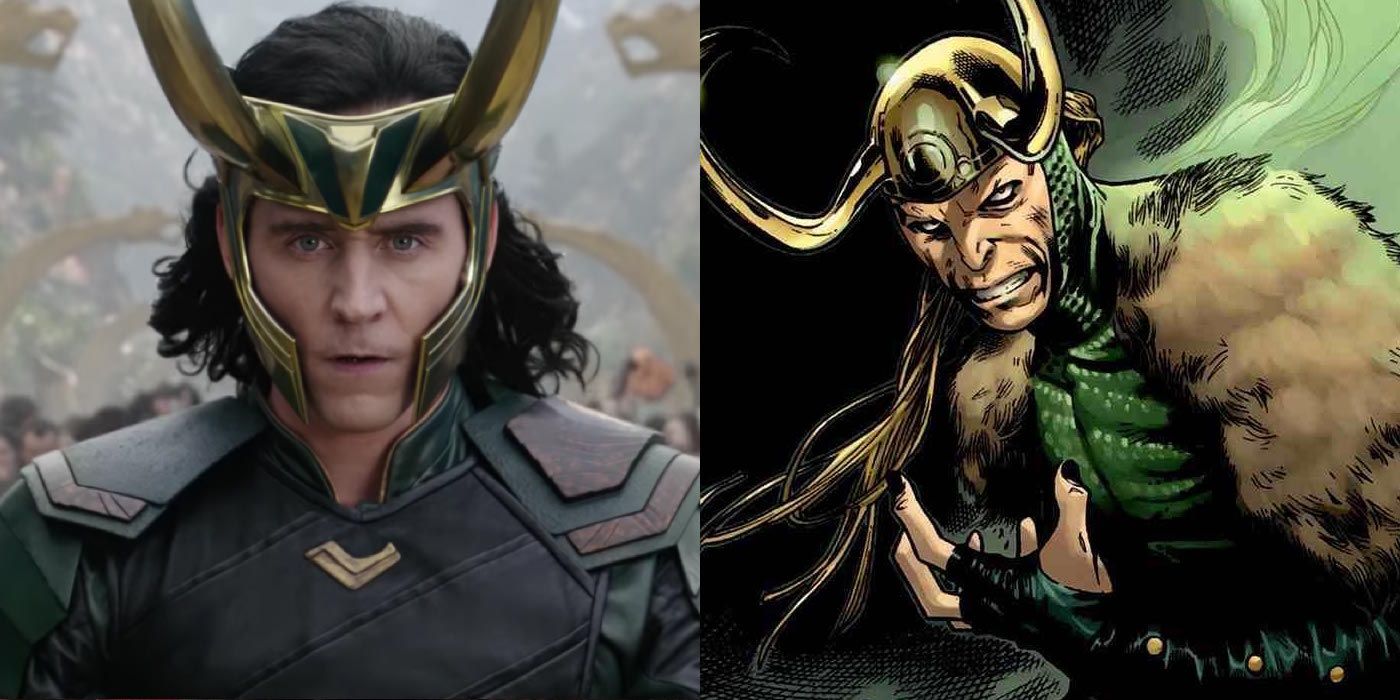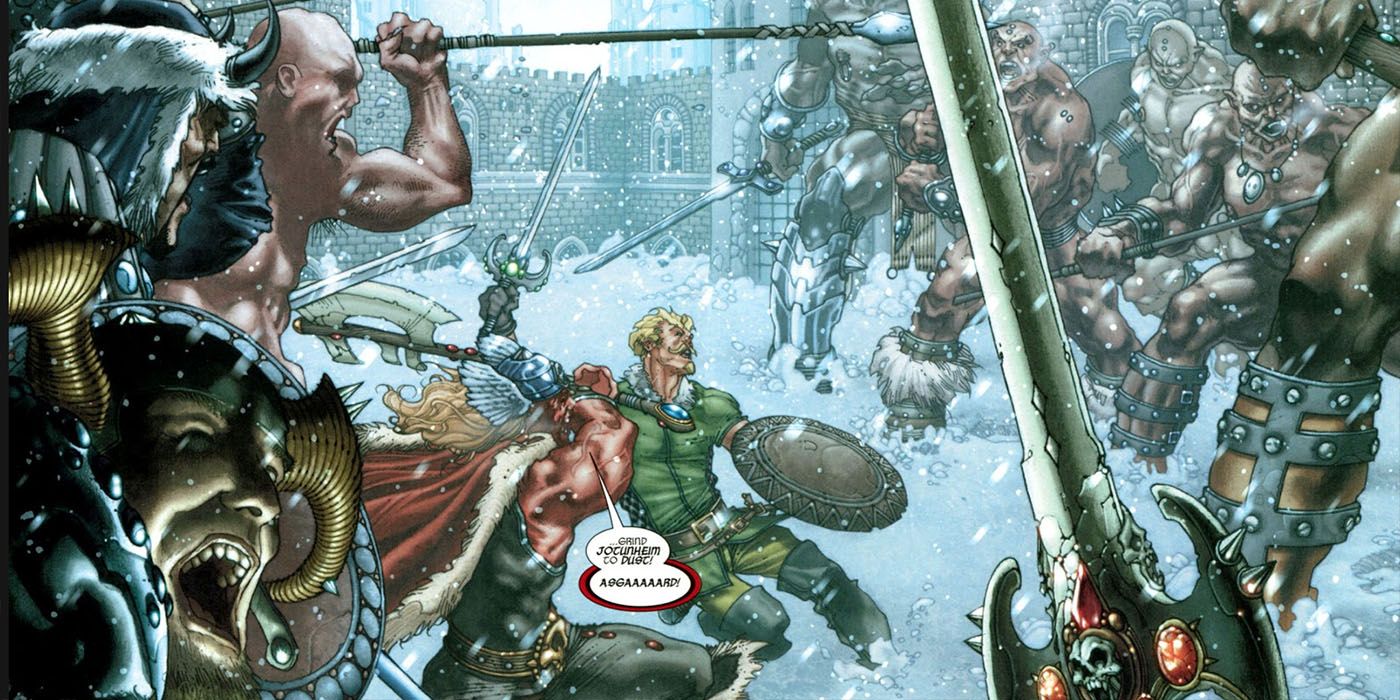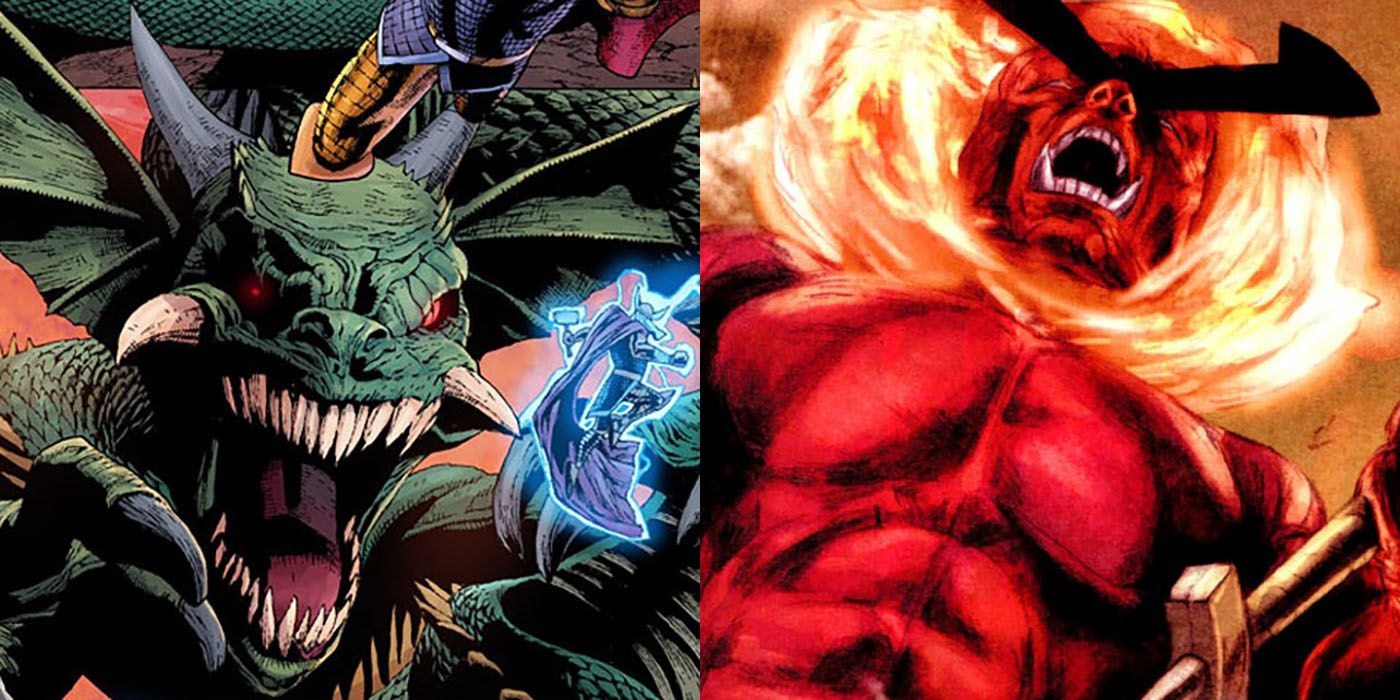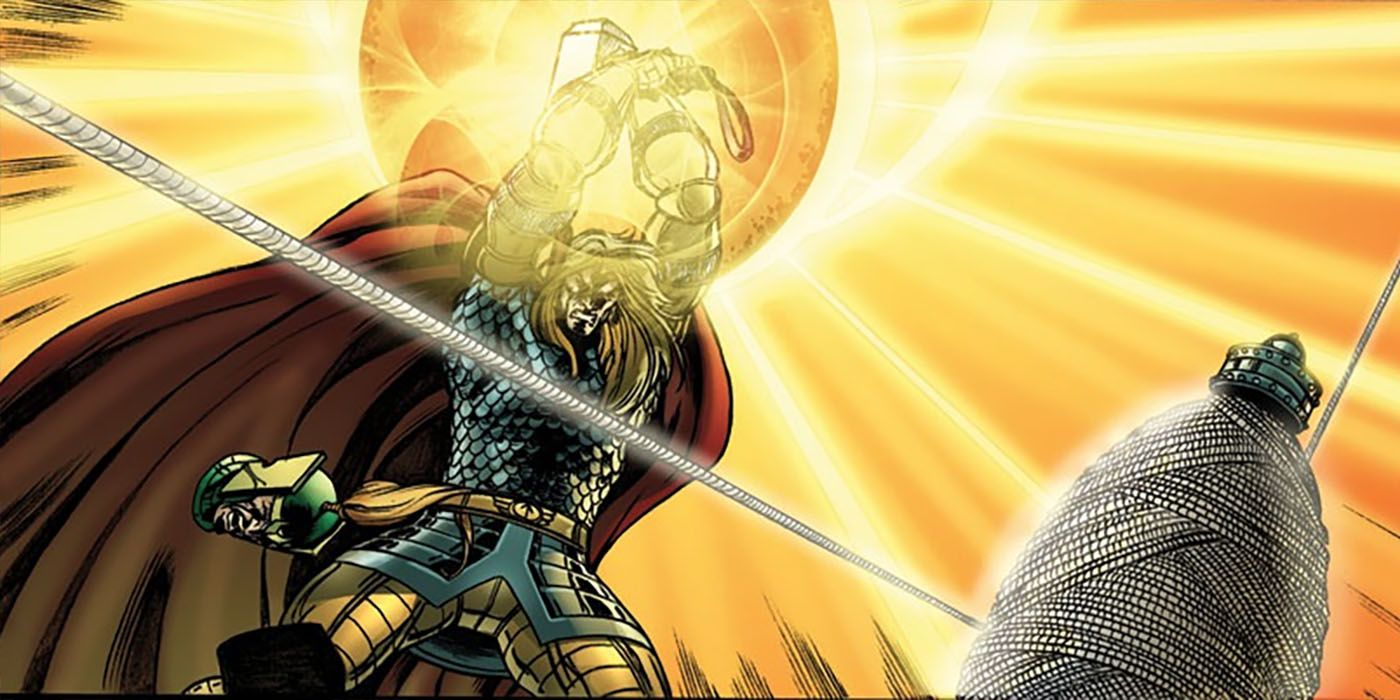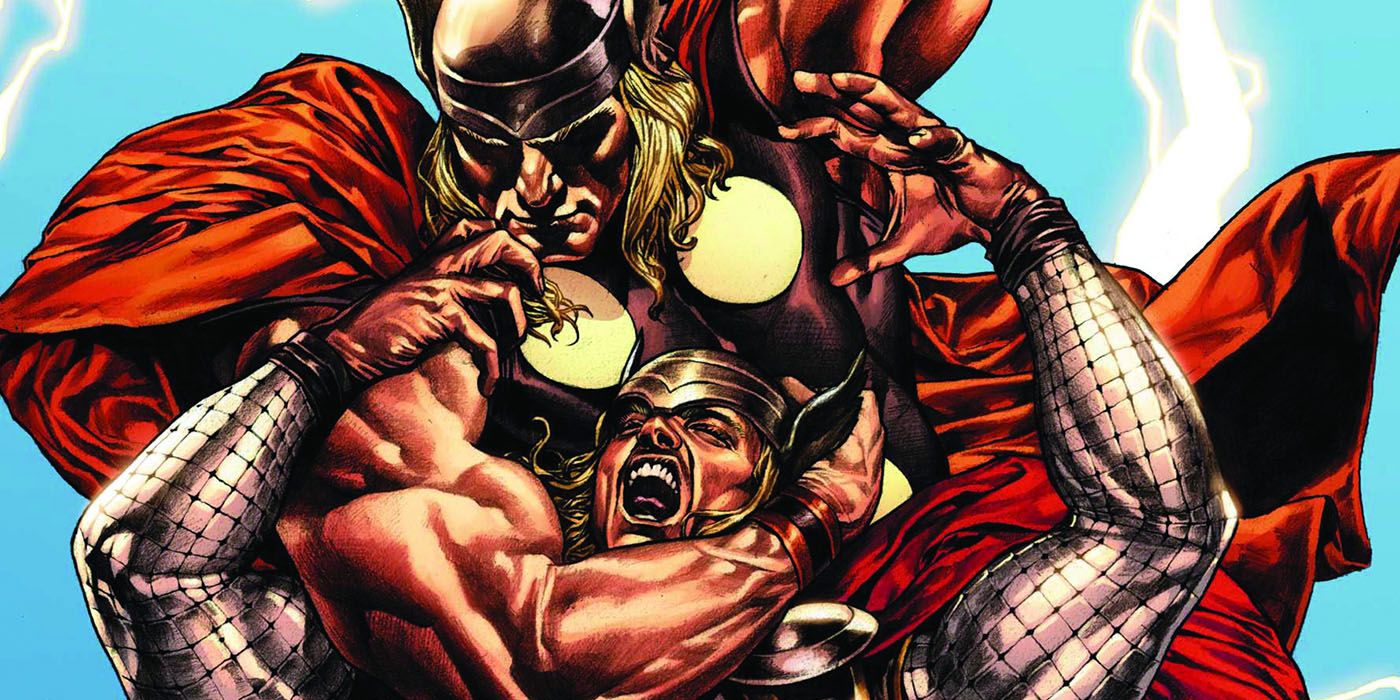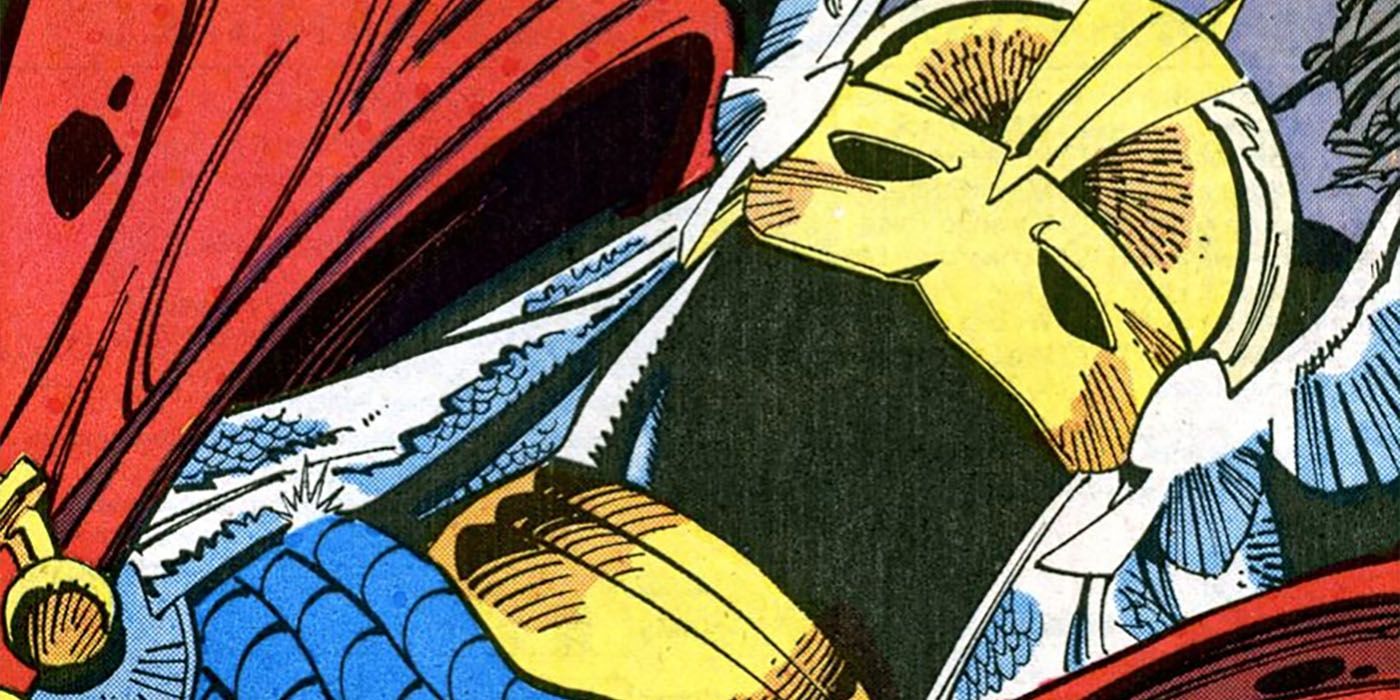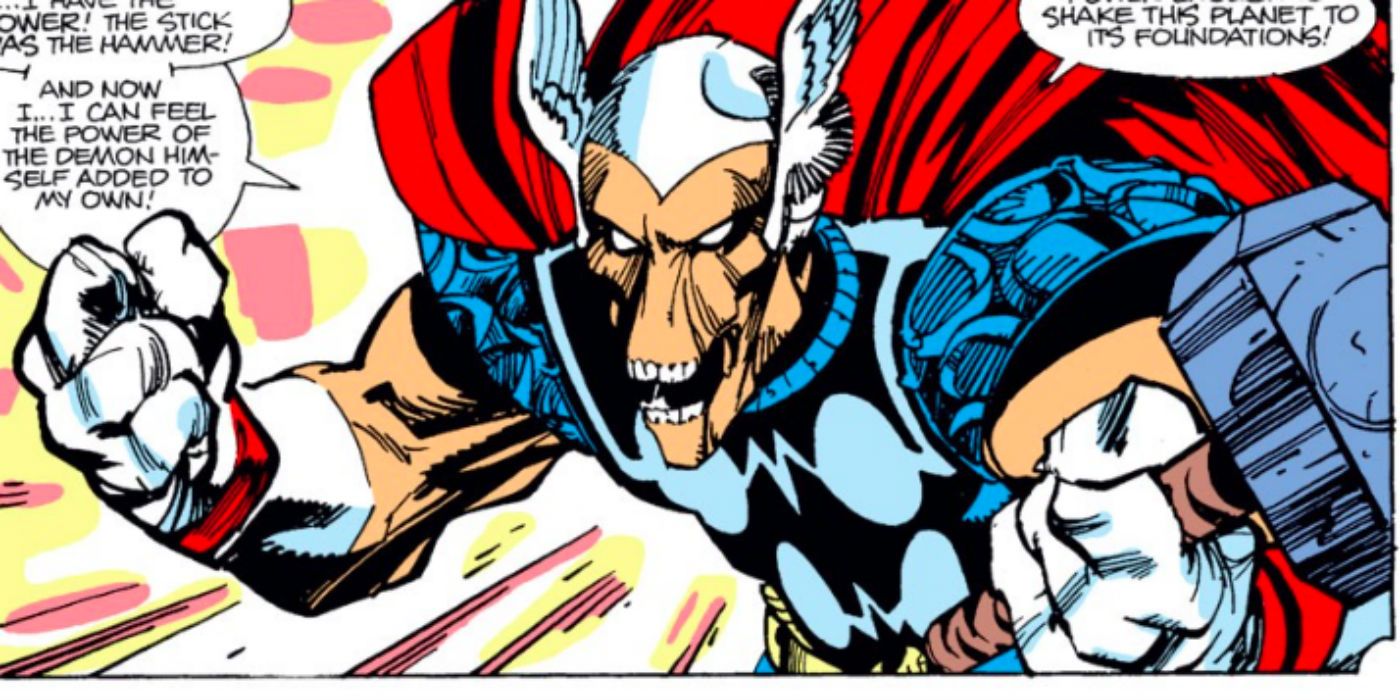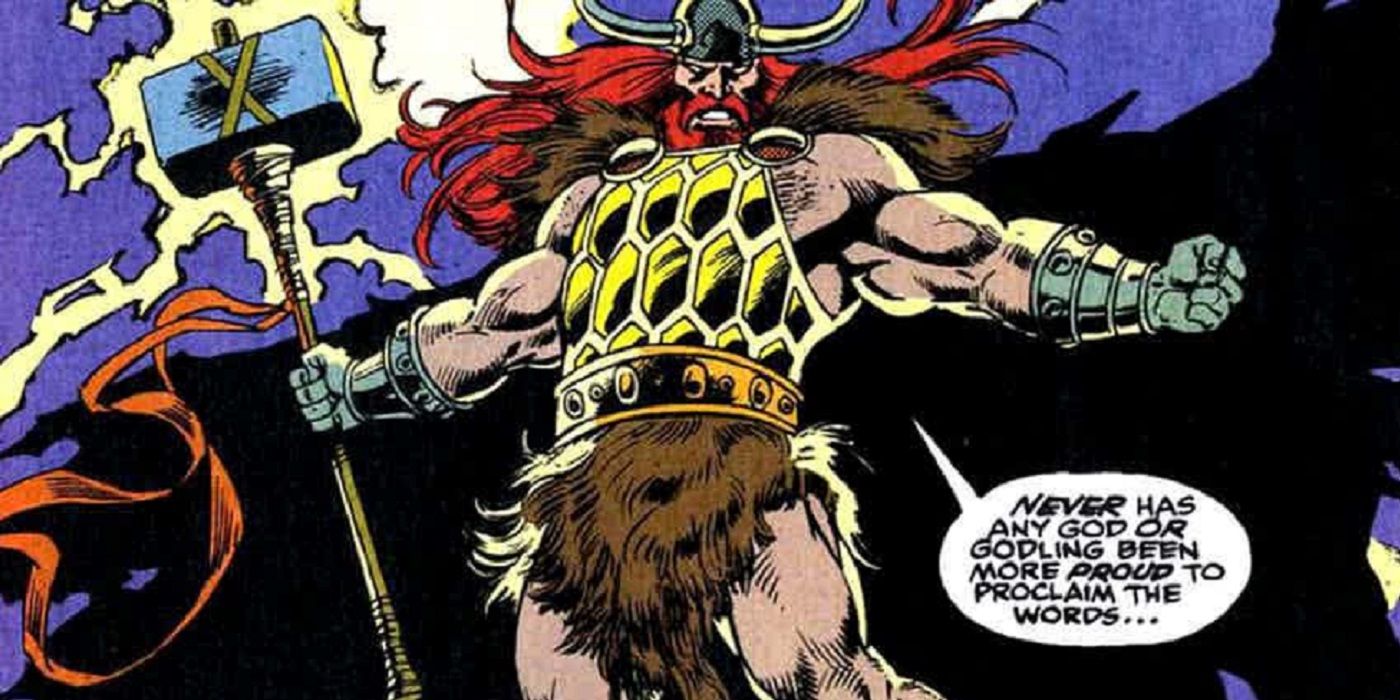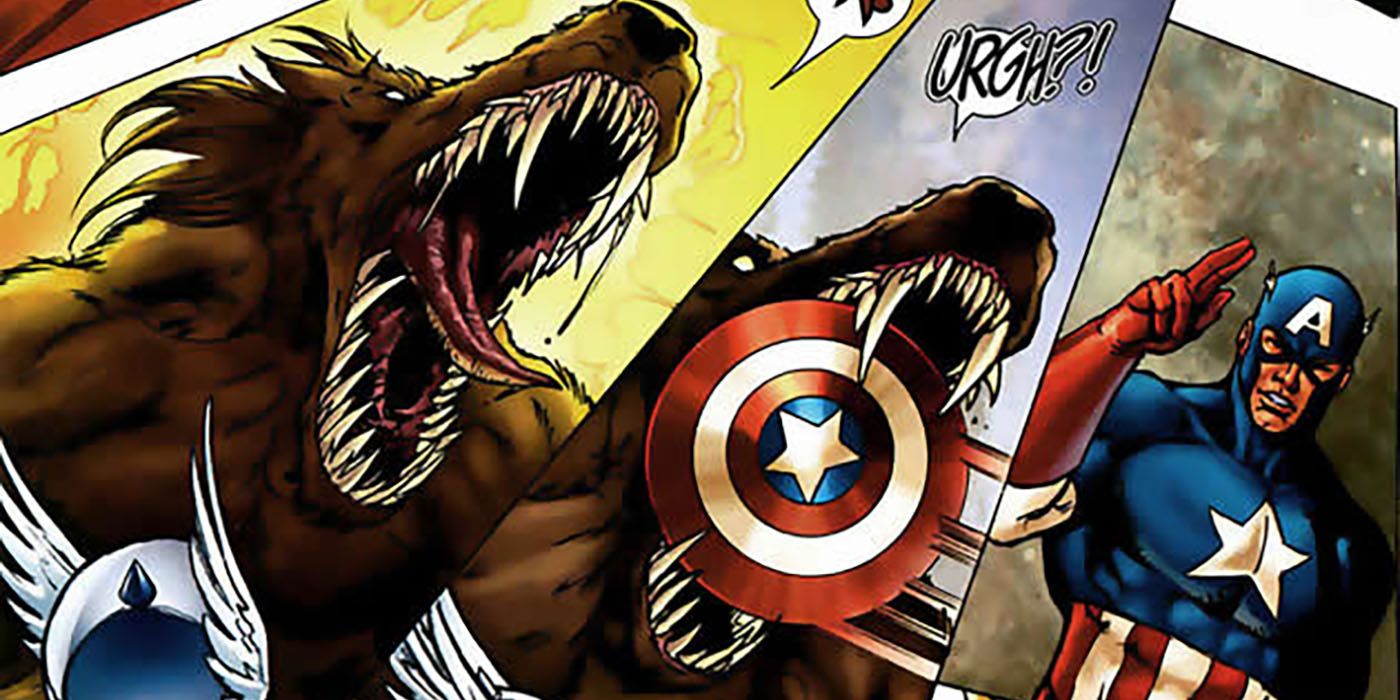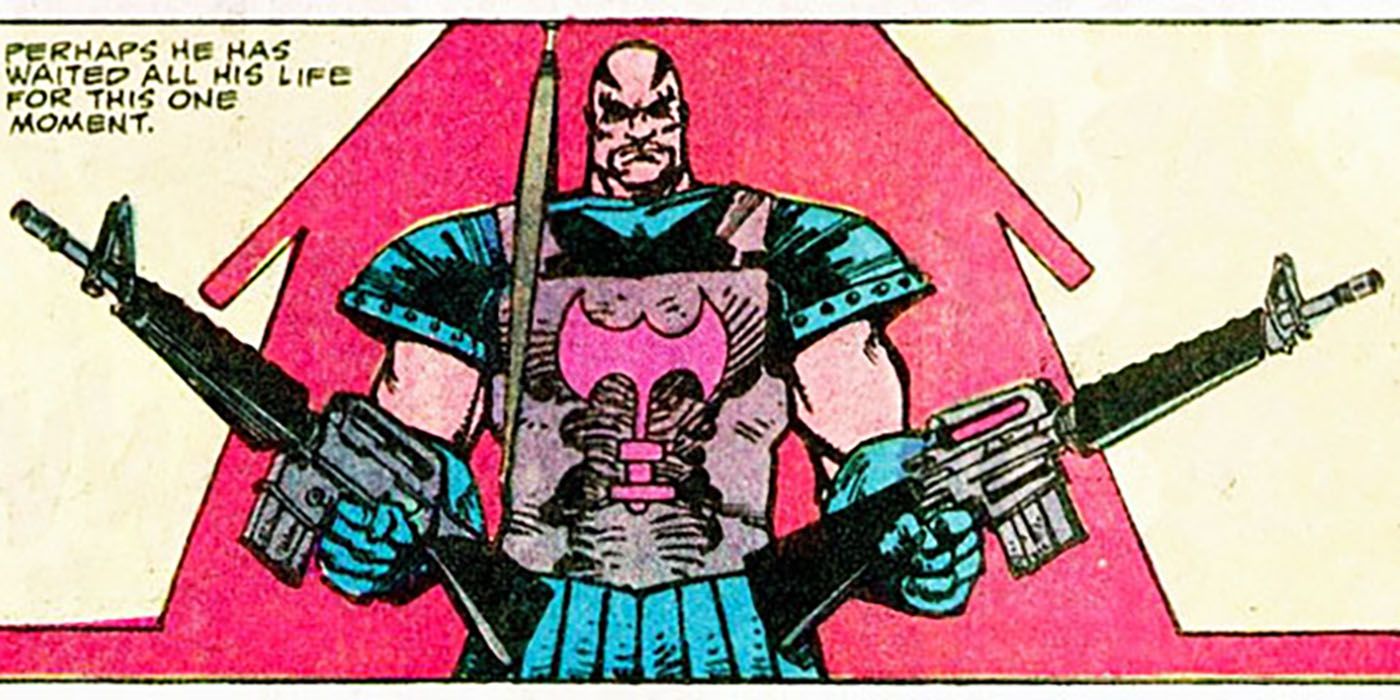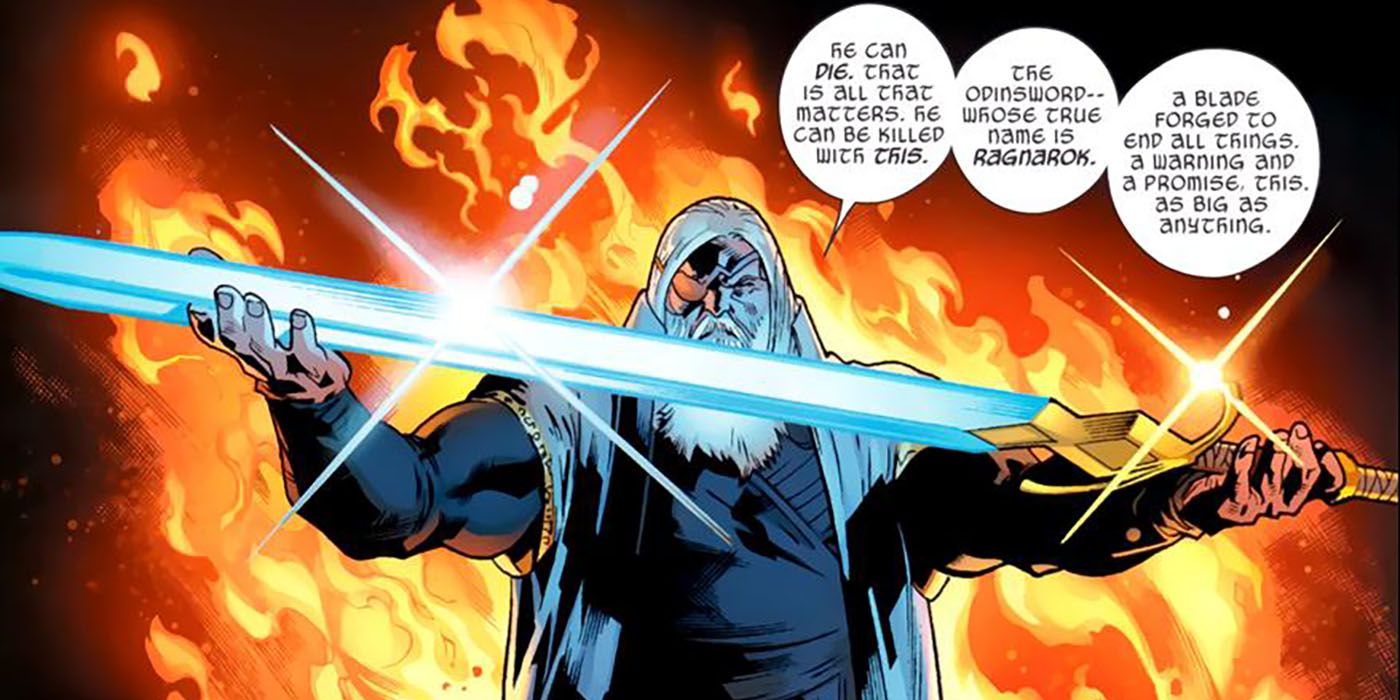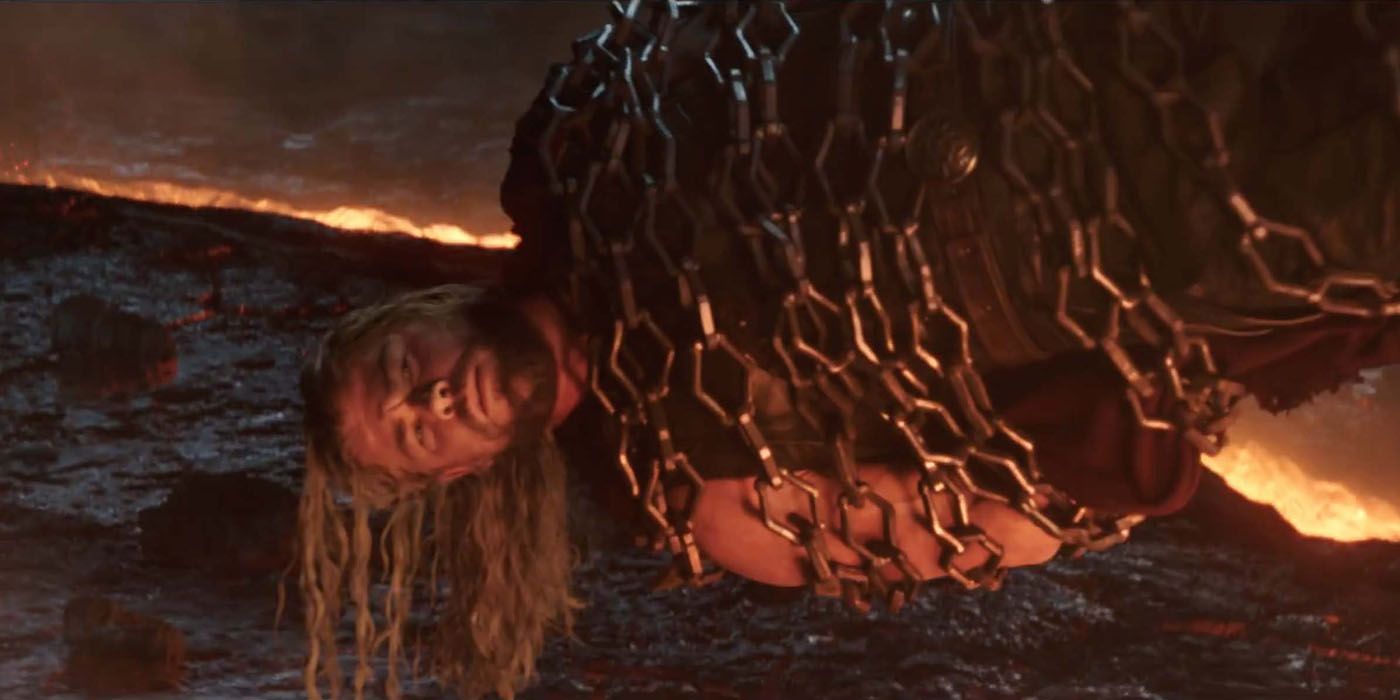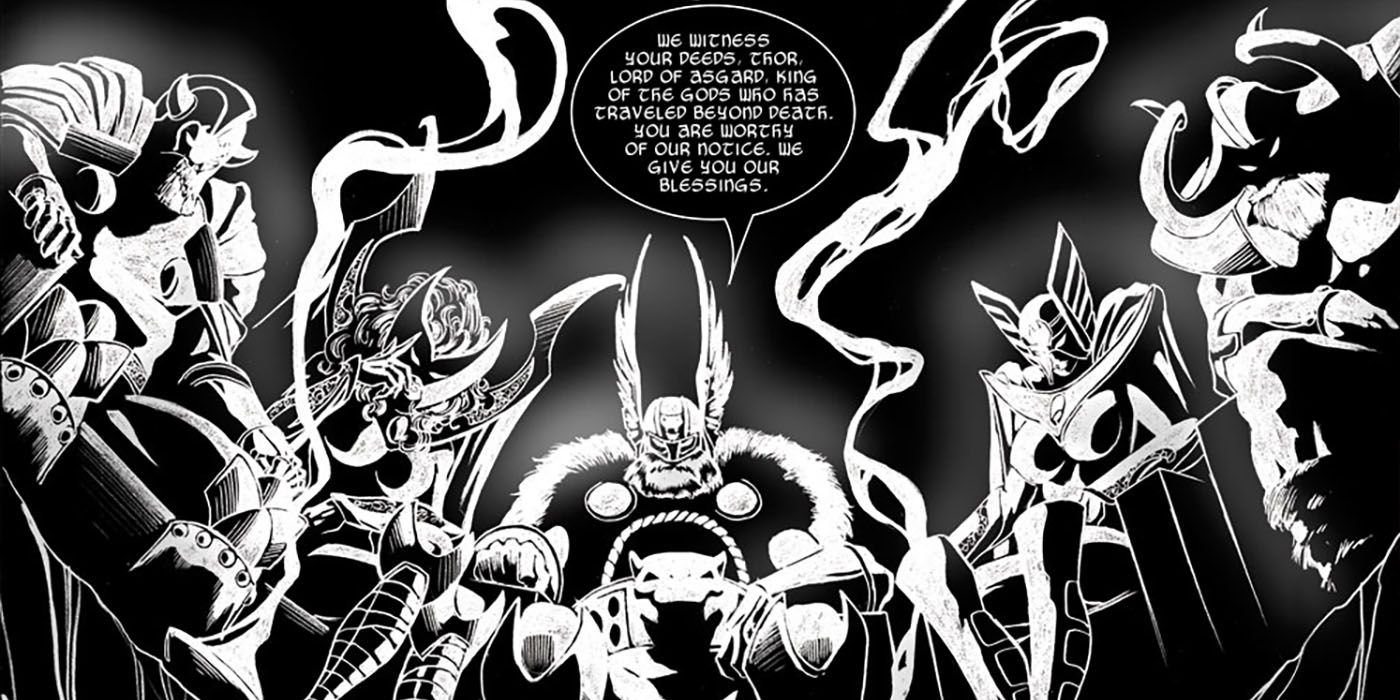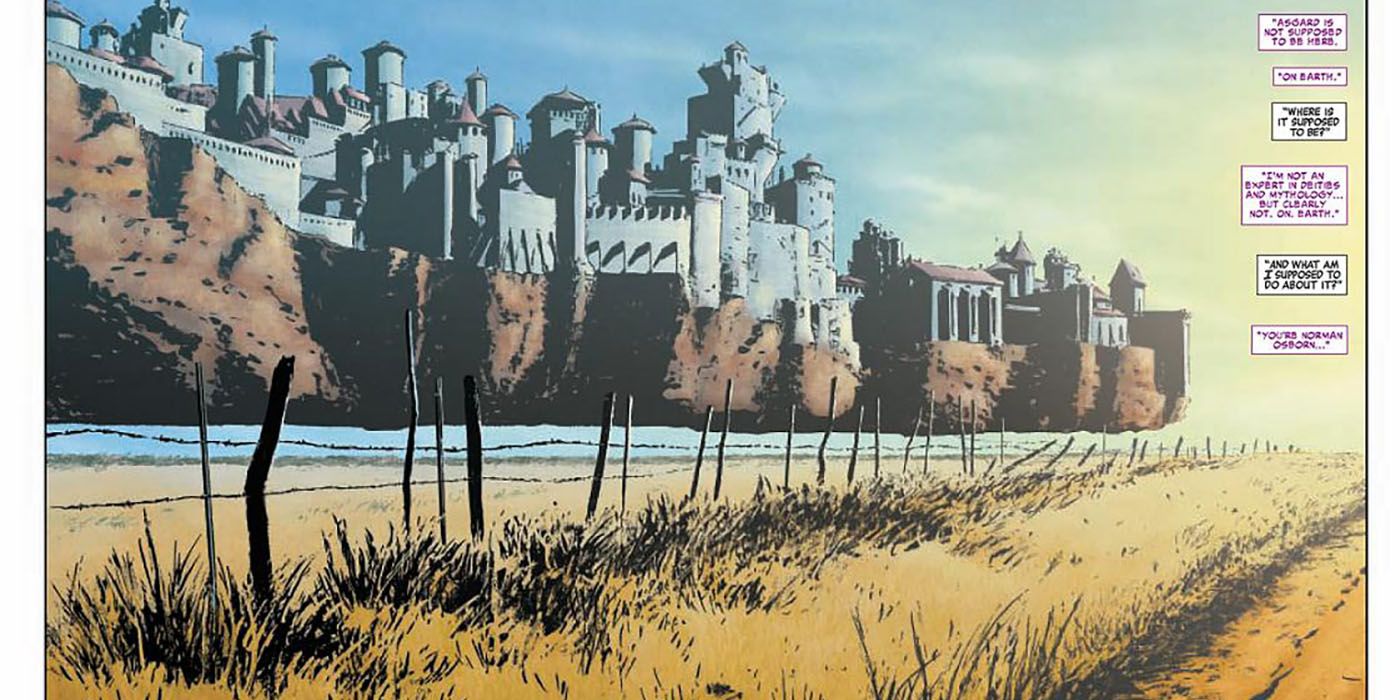After striking the box office with lighting for the third time, things couldn’t look better for the MCU’s resident god as Thor: Ragnarok took the world of cinema by storm.
The seventeenth movie in the world’s highest-grossing franchise had breathed new life into the world of Chris Hemsworth’s muscular heartthrob, and with the destruction of Asgard, set the stage for the fast-approaching Avengers: Infinity War.
Director Taika Waititi managed to inject a healthy dose of neon and laughter into the franchise, those grim days of Thor: The Dark World seem but a distant memory. With Ragnarok clearly not being the end of days that its literal translation refers to, just what is the Twilight of the Gods all about in Norse Mythology and the pages of Marvel’s comic books?
Pulled from Norse history, Ragnarok foretells the falling of the land and the death of the gods. Clearly, the comics focus on an equally devastating course of events, but does it really play out like the movie with a fire demon, a Goddess of Death, and Matt Damon reenacting a play as Loki the Trickster God? Well, not quite.
With that in mind, here are 15 Things You Didn't Know About The REAL Ragnarok.
Ragnarok Never Ends
It is no secret that the literal translation of Ragnarok spells the end of days for our Norse deities. The Twilight of the Gods was first referenced in Lee and Kirby’s The Mighty Thor #127 and #128 from way back in 1966, and since then, there have been several Ragnaroks over the God of Thunder’s eclectic history.
It is basically one big loop that is often used by the Thor comics as a handy reset when the storylines get a little stale. There have been three "official" Ragnaroks in the comics, coming in 1978, 1983, and 2004. Predicted by the prophetess Volla, each Ragnarok has been a slight variation on the one before - well we wouldn’t want it to get boring, would we?
The events always run in the same way, and just like Waititi’s movie, it ends with the destruction of Asgard. There are many casualties, and pretty much everyone died. However, with the gods reborn anew, Ragnarok is only just the beginning Just like the presumed plot of a possible Thor 4, Asgard is a people and not a place, so it isn’t long before everything goes back to normal and ready to start again.
Loki Is The Main Ragnarok Villain
Forget Hela being the Goddess of Death who brings the end of days in Waititi’s movie - Ragnarok is normally down to one person in particular: the unscrupulous Loki. They don’t call him the Trickster God for nothing, you know.
While Tom Hiddleston's slippery half-brother of Thor has become an antihero of sorts in the MCU, the comic book version is much more vindictive in his schemes.
Movie Loki is by no means a saint, but at least he doesn’t try and trigger Ragnarok whenever he can. Usually, this involves Loki leading an army of giants and trolls across the Bifrost to topple the kingdom and rain destruction upon everyone. At least MCU Loki just wanted to sit there and eat grapes.
Keeping with the theme of death and destruction, Loki tends to lose his life in various grisly ways when trying to enact Ragnarok - he once found himself decapitated by Thor thanks to his nefarious plot to bring down the realm.
That being said, Loki has been known to change his spots, and even conspired with Thor and Odin to stop one of the Ragnaroks. However, he is normally the one causing it!
Winter is coming?
There are two major event that foreshadow the Twilight of the Gods.
First, the land is gripped by a fierce blizzard known as the Fimbul Winter, which will cause panic across Asgard and fighting to occur between friends and brothers.
If this wasn’t bad enough, the second part of the prophecy will always have Loki trick the blind god Hoder into killing his brother Balder.
Balder was seen as the bravest in Asgard and was invulnerable to harm - or so we thought. Getting in the seasonal spirit and setting off Ragnarok, it is said that Hoder would attack his brother with a mistletoe arrow, which serves as Balder’s very own kryptonite.
Once these events are set in motion, the door is open for a full-blown Ragnarok and the end of days for the Norse gods.
The Midgard Serpent and Surtur Always Destroy Asgard
With Loki’s reign of terror in full swing, Ragnarok usually brings two mythical beasts to Asgard to help with that final twist of the knife. As the Odinson brothers go head-to-head, the fight is interrupted by the arrival of the Midgard Serpent. Fans of Waititi’s movie had hoped that this snake would make an appearance, but we were instead left with Surtur’s dragon getting it head chopped off.
In both the comics and actual Norse mythology, Thor is supposed to defeat the Serpent and then succumb to its poison shortly after. With pretty much everyone departing the realm in a body bag, fire demon Surtur is then free to flambé what is left of Asgard once his skull has been lilt by the Eternal flame. A victorious Surtur will then go back to his hellish home to wait for the next Ragnarok.
While Thor: Ragnarok skipped the Midgard Serpent, it still had Surtur’s spontaneous bonfire. However, the movie also contained the epic twist of Thor allowing Surtur to destroy his homeworld. Just like the comics and mythology, the big red brute still got to burn the very heavens.
Thor Once Broke The Ragnarok Cycle
Nothing is ever set in stone, but with the Ragnarok cycle going on and on, there are only so many times you can watch Asgard burn to the ground. While Odin usually has some sort of trick up his sleeve, it was actually Thor himself who once managed to stop Those Who Sit Above in the Shadow and break the neverending Ragnarok - albeit briefly.
At the climax of Thor Vol. 2, the writers saw the God of Thunder try a bold move. With the Norns Skuld, Urd, and Verdandi setting up camp in the roots of the World Tree, Thor’s discovery of Those Who Sit Above in the Shadow saw him confront the Fates. Destroying their woven loom, Thor stopped the typical Ragnarok, but also inadvertently ripped all the Asgardians out of existence to still cause the end of the world - whoops.
Everything apart from Midgard was destroyed, and Thor basically spent the next three years taking a rest in limbo. Obviously, the series rebooted, but Thor’s master plan to break Ragnarok didn’t exactly work out how he hoped it would!
There Is A Thor Clone Called Ragnarok
Ragnarok sometimes isn’t just an event, and to confuse fans even more, it is actually the name for a robotic Thor clone too. First introduced as part of 2006’s Civil War storyline, Ragnarok had all the looks of our hammer-throwing hero, but with a villainous streak and cyborg abilities.
Thor was still MIA on his little void vacation, so Tony Stark took a sample of his hair to help Reed Richards and Hank Pym fuse Asgard DNA with Stark Industries tech. In another case of Frankenstein’s monster gone wrong, it didn’t take Ragnarok long to rebel against his masters. After killing the hero Goliath by blasting a hole in his chest, Ragnarok had to be stopped by the anti-registration heroes.
Although he didn’t have an enchanted hammer quite like Mjolnir, Ragnarok’s vibranium and adamantium version could still send sparks flying. Although the clone returned from the dead on several occasions, he was first put of his misery toward the end of Civil War when Hercules and Storm rammed his own hammer into his skull and claimed that he was an insult to the real Thor.
Ragnarok Once Liquified Thor
One of the weirdest Thor storylines saw the Odinson heir turned to liquid by a particularly messy Ragnarok arc. Issue #380 saw Thor defeat the Midgard Serpent as usual, but instead of a slow death by poison, the God of Thunder was instead left in liquid form by their encounter.
Dubbed “Mjolnir’s Song”, the issue followed the fallout of Thor’s bones being weakened by a curse. The odds were stacked against him, but it still looked like he might defeat the Midgard Serpent and carry on trying to prevent Ragnarok. Unfortunately, the climax saw the Serpent bested, but Thor’s suit empty - apart from a puddle of flesh.
This led to an equally strange storyline where Thor’s spirit left his jellified state and possessed the Destroyer. Seeing the Norse hero go up against the Midgard Serpent in such a unique battle was one hell of a way to lead into the 300th issue special.
Beta Ray Bill Escapes Ragnarok
Apart from the Midgard Serpent, there was another big name that was conspicuously absent from Thor: Ragnarok. Although Waititi had included him in early drafts, there was a distinct lack of Beta Ray Bill.
Again from the Simonson era, Beta Ray Bill was the horse-faced Korbinite who just shouldn’t have worked, but did. Purposefully designed as a monster, there were originally questions over Bill’s allegiances, but he has had many crucial Thor storylines. We have already covered how Ragnarok sees the death of pretty much everyone in the Nine Realms, but that doesn’t mean that all the gods are supposed to perish in the final battle for Asgard.
By the time we got to 2004’s Ragnarok storyline, Bill was fighting firmly on the side of the Norse gods as darkness fell. He didn’t quite fit into the story, and because Bill is never destined to die in any Ragnarok fate, Thor teleported him away to safety.
He may have survived that Ragnarok and missed the big screen outing, but fans have high hopes for that strange space horse to saddle up for a possible Thor 4/Ragnarok 2.
A Different Thor Lost Their Life In '70s Ragnarok
There have been several characters to hold the title of God of Thunder, and that has actually been worked quite well into dodging that whole Ragnarok issue.
Thor’s ‘70s run saw the odd inclusion of a TV crew alongside the Ragnarok prophecy. Volla’s prediction went out on television and Loki tricked Thor into giving him access to the media. One of the new faces introduced was Roger "Red" Norvell, a mortal cameraman who became a little obsessed with the power of the gods. Wanting what Thor had - particularly the affection of Lady Sif - Red worked with Loki to help bring about Ragnarok.
Claiming Mjolnir as his own and kidnapping Sif, Red became the de facto God of Thunder for a while, which also meant he had to battle the Midgard Serpent. Loki was locked up and Hela took the lead, while a repentant Red gave Thor his hammer back and sacrificed himself to save the day.
It turns out that it was all cleverly engineered by Odin to save his son. Red’s body was sent back to Earth, but his spirit went up to Valhalla. What a noble guy!
Captain America And Iron Man Have Helped In Ragnarok
The Avengers are no strangers to lending a helping hand in times of crisis, and while the Ragnarok movie had the likes of Hulk, Doctor Strange, and Black Widow all getting a cameo, some even bigger names stopped by in the comics.
The Avengers Disassembled storyline was huge for Marvel, and a crossover between the likes of Iron Man, Captain America, and Thor took our hardened heroes to Asgard. Stark was losing his battle with the bottle and Cap was battling his allegiances to a fugitive Falcon, but the pair still popped up to try and prevent the Twilight of the Gods - you can think of worse people to have around in a battle.
When Thor looked to be on the cusp of defeat, he called for his brothers, but this time it wasn’t Balder and Vidar. Tony Stark and Steve Rogers came to the rescue, and while Cap took on the Fenris Wolf, Iron Man battled Loki. It still wasn’t enough to stop the oncoming Ragnarok, but at least the trio of Avengers tried their best.
Skurge's Last Stand Was A Homage
There were plenty of villains to stock Thor: Ragnarok. Whether it be the horned Hela, the flamboyant Grandmaster, or the unwilling grunt Skurge - they all got their time to shine.
Everyone knows that Karl Urban shaved his head to play Hela’s cocky executioner in the movie, but you may not know that his part was just as important in the comics too. The misunderstood supervillain may not appear in Norse mythology, but Skurge’s legacy as the executioner of Asgard also led to a proper comic book redemption story.
Plucked directly from Simonson’s Thor #362, Skurge’s heroic last stand is as brilliant on the page as it is on the screen. With one of the best character arcs in the movie, Urban did his comic book counterpart proud.
In the comics, the Asgard survivors faced a last stand on the bridge Gjallerbru. Thor said he would hold off the army of the dead for as long as possible, but Skurge knocked him unconscious and took the God of Thunder’s place. With a similar sacrifice, the cinematic Skurge took on Hela’s forces armed with two M-16 rifles and earned his place in Valhalla.
The Odinswood Can Cause Ragnarok
These days, it seems that anything can trigger Ragnarok. While the movie took Surtur’s skull being placed into the Eternal Flame, the comics see the end of days start much earlier on. There is a mythical weapon called the Odinsword, and apparently drawing the giant blade can set Ragnarok rolling.
Ironically, Thor has used this information to his own advantage to bring the usurper Seidring back into line. With Seidring having stolen the Odinforce, Thor threatened to wield the Odinsword if the power wasn’t returned. It didn’t take long before Seidring soon gave up his claim.
It is thought that the Odinsword was made from a cursed Nibelung ring of gold, which may explain why the Asgardians are so precious about it.
Thor: God of Thunder Influenced Ragnarok
With its retro vibe, it is easy to say that Taika Waititi took most of his Ragnarok influences from the Thor comics of the ‘60s and ‘70s. However, that doesn’t mean more recent runs didn’t impact the movie too. The bright and campy tones of these decades are easy to spot in the likes of Sakaar, but Ragnarok has some much darker elements too.
In particular, 2012’s gritty Thor: God of Thunder can be seen throughout the cinematic spectacle. The movie may focus mostly on one timeline, but God of Thunder tracked young Thor, his “present” self, and a grizzled future version where he alone in Asgard and sporting a gnarly eye patch.
In fact, some might spot that the scene of Thor hanging in chains above Surtur at the start of the movie was an exact remake of one panel from God of Thunder. It shows that Waititi had clearly been doing his Thor research before embarking on the project.
Those Who Sit Above In Shadow
So, who (or what) is engineering such a cataclysmic merry-go-round for the people of Asgard? As Thor Vol. 2 came to an end in 2004’s acclaimed Thor Disassembled storyline, it was revealed that a mysterious council beyond the Norse gods was using Ragnarok as its very own power source.
Dubbed Those Who Sit Above in Shadow, these were the possible creators of the Asgardians or may have been brought into existence themselves by Norse myths.
During the third Ragnarok, Thor hung himself on Yggdrasil and gained the knowledge of who was behind it all. He then confronted Those Who Sit Above in Shadow and put a plan in place to knock them off their thrones and break the Ragnarok cycle they were feeding on.
It was thought that Those Who Sit Above in Shadow perished along with Asgard, however, they were later revealed to be alive to confront Loki in a void of nothingness. The trickster then questioned their entire existence and they were forced to flee. Very little is known about Those Who Sit Above in Shadow, but Stan Lee once joked that they are called Larry, Larry, Larry, Ralph, and Larry.
A Post-Ragnarok Thor Rebuilt In Oklahoma
We have spoken a lot about the Ragnarok that nearly ended all Ragnaroks and that three-year Thor hiatus between 2004 and 2007, but what happened when everyone returned?
Even something as monumental as the Twilight of the Gods was never really going to be the end of everything, and just like all comic book finales, Asgard and its inhabitants came back fighting.
If you thought TV cameramen picking up Mjolnir was weird enough, what about rebuilding Asgard in Oklahoma? As Donald Blake managed to wake Thor from the Void of Non-Existence, the God of Thunder set about finding a new Asgard.
Similar to what would be a presumed plot for Thor 4, those still left kicking around decided to call Earth their new home. However, out of all the places to settle down, Thor decided to rebuild Asgard as a floating landmass over Oklahoma. Well, after three Ragnaroks across your history, can you really blame him for wanting to find somewhere a little quieter to lay his head?
---
Do you have any more Ranarok knowledge to share? Sound off in the comments!

